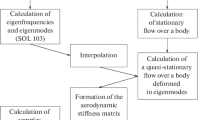Abstract
In the frame of the hypersonic flow theory, the small perturbation approach was applied to simplify the governing equations. The goal was to determine flows past blunt and slender bodies (or flows with low angles of attack). The outcome of these investigations was the Mach number independence principle of hypersonic flows by K. Oswatitsch, some similarity rules for the transformation between hypersonic flows past affine configurations with different thicknesses, the classification of hypersonic flows by the Tsien parameter and a non-linear equation describing the aerodynamic coefficients (lift and drag) past an inclined thin flat plate. In the light of this hypersonic flow theory, the aerodynamic data of the winged re-entry vehicles: the Shuttle Orbiter, the Hermes re-entry vehicle, the X-33 demonstrator and the X-38 crew rescue vehicle as well as the hypersonic cruise vehicle Sänger are investigated. Remarkable similarities regarding the lift and drag coefficients between all these real configurations for hypersonic and supersonic Mach numbers are found.


















Similar content being viewed by others
Notes
The aerodynamic databases are established to the authors knowledge by the tools: Shuttle Orbiter: engineering method, wind tunnel, free flight; Hermes: engineering method, wind tunnel, CFD; X-33: CFD; X-38: windtunnel, CFD; Sänger: engineering method, wind tunnel.
The negative sign in the term \(\left( 1 - \frac{\gamma - 1}{2} M_\infty \alpha \right)\) is due to the counterclockwise definition of the angle of attack \(\alpha\).
For the X-38 configuration there are no data for \(M_\infty = 8\) available, instead the values of \(M_\infty = 5.47\) are used, which meet obviously also the Mach number independence principle.
The inflection point is necessary since for \(\alpha \Rightarrow 90^{\circ }\) the normal force run over into the drag force and the axial force into the lift force which tends to zero.
For the determination of the scaling factor a the highest available angle of attack values for \(c_{\text {L}}\) of the various space vehicles considered are used.
Beyond \(\alpha \approx 30^{\circ }\) the graph of Eq. (2.3) follows further its quadratic non-linearity and has no inflection point as the vehicle data have.
Unfortunately supersonic data for the X-33 vehicle are not available.
For X-38 no data are available for \(M_\infty = 3.0\).
Since the data originally are given only every \(5^{\circ }\) an interpolation has been performed to have the data available every \(2^{\circ }\).
The X-38 data are omitted in Fig. 18.
Unfortunately there are no supersonic data available for the X-33 vehicle.
Abbreviations
- a :
-
Scaling factor
- \(a_0,a_1,a_2,b,c_1,c_2\) :
-
Coefficients
- \(c_{\text {D}}\) :
-
Drag coefficient
- \(c_{\text {L}}\) :
-
Lift coefficient
- \(c_{\text {p}}\) :
-
Pressure coefficient
- K :
-
Tsien parameter
- M :
-
Mach number
- \(S_{\text {ref}}\) :
-
Reference area
- \(S_{\text {ref}}^*\) :
-
Homogenized reference area
- \(\alpha\) :
-
Angle of attack
- \(\vartheta\) :
-
Deflection angle
- \(\gamma\) :
-
Ratio of specific heats
- LRV:
-
Lifting re-entry vehicle,
- WRV:
-
Winged re-entry vehicle.
References
Tsien, H.S.: Similarity laws of hypersonic flows. J. Math. Phys. 25, 247f (1946)
Oswatitsch, K.: ZAMP 2, 249–264 (1951)
van Dyke, M.D.: Hypersonic small disturbance theory. J. Aeronaut. Sci. 21, 105f (1954)
Hayes, W.D.: On hypersonic similitude. Quart. Appl. Math. 5, 179f (1946)
Liepmann, H.W., Roshko, A.: Elements of Gasdynamics. Wiley, New York (1957)
Hayes, W.D., Probstein, R.F.: Hypersonic Flow Theory. Academic Press, New York (1966)
Zierep, J.: Theoretische Gasdynamik 2. Schallnahe und Hyperschallstroemungen. Braun Verlag, Karlsruhe (1972)
Weiland, C.: Aerodynamic Data of Space Vehicles. Springer, Berlin/Heidelberg (2014)
Ackeret, J.: Habilitationsschrift, ETH Zürich (1928)
Hirschel, E.H.: Basics of Aerothermodynamics, 2nd edn. Springer, Berlin/Heidelberg (2015)
Author information
Authors and Affiliations
Corresponding author
Additional information
Publisher’s Note
Springer Nature remains neutral with regard to jurisdictional claims in published maps and institutional affiliations.
Rights and permissions
About this article
Cite this article
Weiland, C. The aerodynamics of real space vehicles in the light of supersonic and hypersonic approximate theories. CEAS Space J 12, 85–96 (2020). https://doi.org/10.1007/s12567-019-00264-w
Received:
Revised:
Accepted:
Published:
Issue Date:
DOI: https://doi.org/10.1007/s12567-019-00264-w




